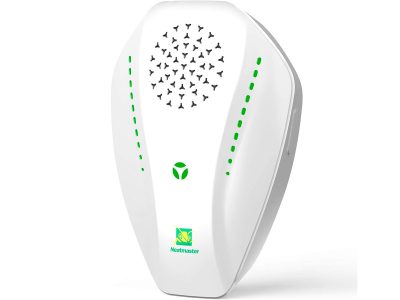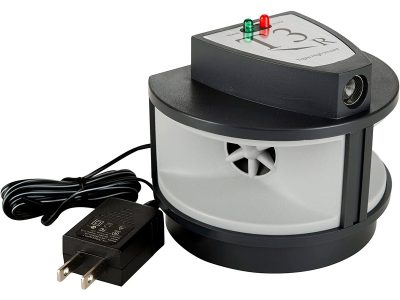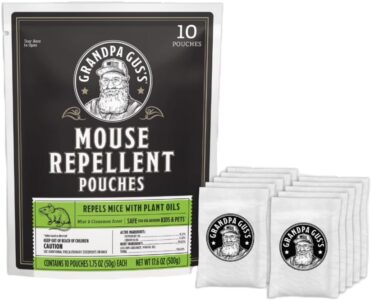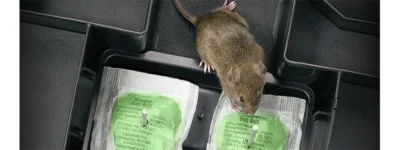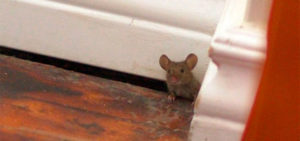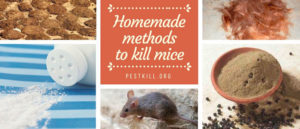Dealing with a mouse problem in your home? You’re not alone. These tiny invaders can contaminate food, damage property, and spread disease. Finding the right mouse repellent is crucial for keeping your home mouse-free. This comprehensive guide explores the most effective mouse repellents available in 2025, from electronic devices to natural solutions, helping you choose the best option for your specific situation. In addition to repellents, it’s important to consider other methods for managing the mouse population in your space. Understanding the best mouse traps for home use can significantly enhance your efforts, providing immediate solutions to any existing infestations. By combining repellents with effective trapping techniques, you can create a comprehensive strategy that ensures your home remains safe and comfortable.
Quick Picks: Best Mouse Repellents of 2025
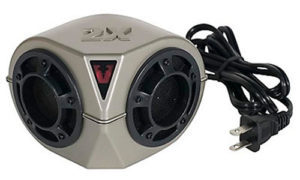
Editor’s Choice
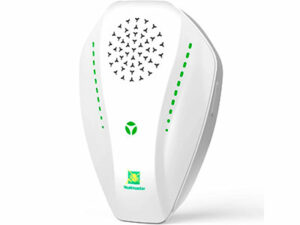
People’s Choice
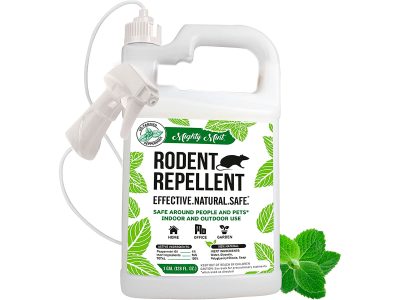
Best Spray
- Understanding Mouse Behavior: Why Repellents Work
- Types of Mouse Repellents: Pros and Cons
- 5 Best Mouse Repellents Reviewed for 2025
- Natural Mouse Repellents That Actually Work
- Using Steel Wool as a Physical Barrier
- Creating a Comprehensive Mouse Prevention Strategy
- FAQs About Mouse Repellents
- When to Call a Professional
- Conclusion
Understanding Mouse Behavior: Why Repellents Work
Mice are intelligent creatures with highly developed senses, especially their sense of smell and hearing. Despite their small size, they can cause significant damage to your home by chewing through wires, insulation, and furniture. Understanding how mice navigate and what deters them is crucial to choosing the right repellent.

Sense of Smell
Mice possess an extremely keen sense of smell that guides much of their behavior. They’re drawn to food odors but repelled by certain strong scents like peppermint, ammonia, and cayenne pepper.
Sensitive Hearing
Mice can hear sounds well beyond the range of human hearing, including ultrasonic frequencies (above 20 kHz). This sensitivity makes ultrasonic repellents effective deterrents.
Nesting Behavior
Mice seek warm, secluded areas to build nests and raise their young. They prefer quiet, undisturbed locations near food sources with easy access to water.
Types of Mouse Repellents: Pros and Cons
When it comes to keeping mice away, you have several options to choose from. Each type of repellent works differently and comes with its own set of advantages and disadvantages.
Electronic Ultrasonic Repellents
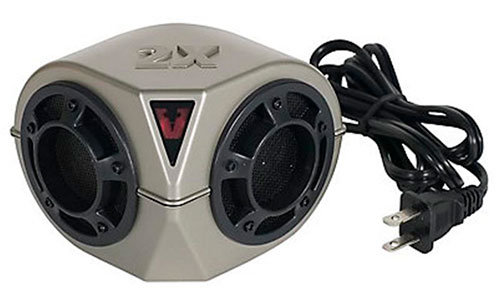
Electronic ultrasonic repellents emit high-frequency sound waves that are inaudible to humans but irritating to mice. These devices plug into electrical outlets and create an uncomfortable environment for rodents.
- Humane solution that doesn’t harm mice
- Safe for use around children and most pets
- Easy to set up and use
- No need for cleanup or disposal of dead rodents
- Can cover large areas with a single device
- Sound can’t penetrate walls or furniture
- Effectiveness can diminish over time as mice may become accustomed to the sound
- May affect pet rodents like hamsters, guinea pigs, and rabbits
- Results may not be immediate
- Requires electricity to operate
Scent-Based Repellents

Scent-based repellents use strong odors that mice find unpleasant. These can come in the form of sprays, pouches, or essential oils that create an invisible barrier mice won’t cross.
- Often made from natural ingredients
- Many options are safe around children and pets
- Can be applied precisely where needed
- Some options (like peppermint) smell pleasant to humans
- No electricity required
- Need regular reapplication as scents fade
- May not be effective for severe infestations
- Some scents might be unpleasant to humans
- Coverage area is typically smaller than electronic options
- Effectiveness varies based on concentration and freshness
Chemical Repellents
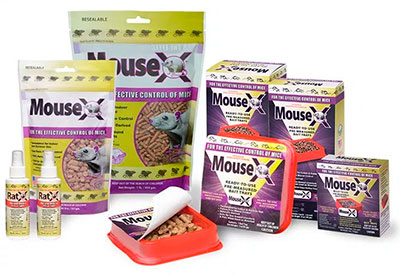
Chemical repellents use synthetic compounds designed specifically to deter mice. These products often come in granule or spray form and create a barrier that mice avoid crossing.
- Usually highly effective
- Longer-lasting than natural scent repellents
- Consistent performance
- Available in weather-resistant formulations for outdoor use
- Often includes additional pest protection
- May contain ingredients harmful to children and pets
- Potential environmental concerns
- Often more expensive than natural alternatives
- Chemical odors may be unpleasant
- Requires careful handling and application
Layering different types of repellents creates a more effective defense system against mice. For best results, consider using an ultrasonic device to cover large areas, scent-based repellents at entry points, and sealing gaps with steel wool to create a comprehensive mouse prevention strategy.
5 Best Mouse Repellents Reviewed for 2025
After extensive research and testing, these five mouse repellents stand out as the most effective options available in 2025. Each product has been evaluated based on effectiveness, safety, ease of use, and overall value.
Victor Heavy-Duty PestChaser Pro
Editor's ChoiceHow Does It Work
How to Use
- Simply plug the device into any standard electrical outlet
- Place near areas with mouse activity or entry points
- Position away from soft furnishings that might absorb sound waves
- The red LED indicator light confirms the unit is operational
- For maximum effectiveness, use one unit per room
- High power and volume ensure continuous effectiveness
- Varying frequencies prevent mice from becoming accustomed to the sound
- Easy to use - simply plug in and let it work
- Safe around children and non-rodent pets
- No chemicals or traps to deal with
- Higher price point compared to basic repellents
- Requires an electrical outlet
- Sound can be blocked by furniture and walls
- May take 1-2 weeks to see full results
Neatmaster Ultrasonic Pest Repeller
People's ChoiceHow Does It Work
How to Use
- Plug the device into any standard electrical outlet
- Select the appropriate mode based on infestation severity (Green for prevention, Blue for moderate issues, Red for severe infestations)
- Place in open areas away from furniture that could block sound waves
- For larger spaces, multiple units may be required as sound cannot penetrate walls
- Allow 1-2 weeks for full effectiveness
- Three intensity modes for different infestation levels
- Effective against multiple pest types (mice, rats, insects)
- Large coverage area up to 1200 square feet
- Money-back satisfaction guarantee
- Simple plug-and-play operation
- Cannot penetrate walls - requires one unit per room
- Blue and red modes produce audible sounds that some may find annoying
- May interfere with some pet rodents like hamsters or guinea pigs
- Requires continuous power connection
Ultrasonic repellers can affect pet rodents like guinea pigs, hamsters, and rabbits. If you have these pets, keep them in rooms without ultrasonic repellers or choose a different type of mouse repellent.
Mighty Mint Gallon Rodent Natural Peppermint Oil Spray
Best Natural SprayHow Does It Work
How to Use
- Shake well before each use to ensure proper mixing
- Apply liberally to areas where mice activity has been noticed
- Spray around entry points, along baseboards, and in dark corners
- Use the included microfiber cloth to wipe surfaces after spraying for better coverage
- Ideal for RVs, autos, garages, and storage areas
- Reapply every 2-3 weeks or as needed
- 100% plant-based ingredients - safe for families and pets when used as directed
- Extra-concentrated formula provides long-lasting protection
- Pleasant mint scent for humans while repelling rodents
- Includes microfiber cloth for easy application
- Economical gallon size ideal for large areas or persistent problems
- Made in the USA with high-grade, locally-sourced peppermint oil
- Higher upfront cost (though more economical per ounce)
- Requires regular reapplication for continued effectiveness
- Strong mint scent may be overwhelming in confined spaces
- Less convenient to handle than smaller spray bottles
T3-R Triple High Impact Mice Repeller
Best for Large AreasHow Does It Work
How to Use
- Simply plug the device into a standard electrical outlet
- Place in an open area where sound can disperse effectively
- Ensure furniture or curtains don't block the sound waves
- For optimal results, keep the device running continuously
- Allow 12-16 days for full effectiveness as rodents gradually vacate the area
- Exceptional coverage area of up to 6000 square feet
- Triple transmitters prevent mice from adapting to the sound
- No chemicals or traps to maintain
- Safe for homes with children and non-rodent pets
- Simple to use with no assembly required
- Higher price point than basic ultrasonic repellers
- Not waterproof - cannot be used in damp areas
- Not suitable for extreme weather conditions
- Requires continuous access to power
- May take up to two weeks to see full results
Grandpa Gus's Extra-Strength Mouse Repellent Pouches
Best Scent PouchesHow Does It Work
How to Use
- Simply remove each pouch from its resealable bag
- Place pouches in areas with mouse activity or potential entry points
- Position in enclosed spaces like cabinets, closets, storage areas, and vehicle compartments
- Each pouch covers approximately 50 square feet
- Replace every 1-3 months when scent begins to fade
- For severe infestations, use in combination with other repellent methods
- All-natural formula with plant-based essential oils
- No harsh chemicals or toxins - safe around family and pets
- Doubles as an air freshener with pleasant mint and cinnamon scent
- Each pouch lasts 1-3 months for long-term protection
- No traps, mess, or cleanup required
- Effective in enclosed spaces like vehicles and storage areas
- May require more frequent replacement in high-humidity environments
- Not as effective in large, open spaces
- Strong scent may be too intense for some people
- More expensive per square foot than some alternatives
Natural Mouse Repellents That Actually Work
If you prefer to avoid commercial products or want to supplement your mouse prevention strategy with household items, several natural repellents have proven effective against mice.
Peppermint Oil
Peppermint oil is one of the most effective natural mouse repellents. The strong, menthol scent overwhelms mice’s sensitive noses and creates an uncomfortable environment they prefer to avoid.
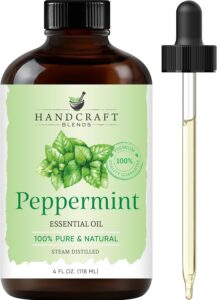
How to Use Peppermint Oil
- Apply 5-10 drops of 100% pure peppermint oil on cotton balls and place them in areas of mouse activity
- Replace cotton balls every 3-5 days as the scent fades
- Create a spray by mixing 10-15 drops of peppermint oil with 1 cup of water and a few drops of dish soap in a spray bottle
- Spray along baseboards, entry points, and potential nesting areas
- Consider growing mint plants near entry points or in windowsills
Ammonia
Ammonia smells similar to predator urine, triggering fear responses in mice. This common household cleaner can be an effective deterrent when used correctly.

How to Use Ammonia
- Mix 2-3 tablespoons of ammonia with 2 cups of water
- Soak rags or cotton balls in the solution and place in sealed containers with small holes punched in the lid
- Position containers near mouse entry points and areas of activity
- Replace every few days as the scent diminishes
When using ammonia as a repellent, always wear gloves, ensure proper ventilation, and keep children and pets away from the treated areas. Never mix ammonia with bleach or other cleaning products as this can create toxic fumes.
Cayenne Pepper
The capsaicin in cayenne pepper creates a burning sensation in the nasal passages of mice, making it an effective natural repellent.

How to Use Cayenne Pepper
- Sprinkle pure cayenne pepper powder along baseboards, entry points, and in areas with mouse activity
- Create a spray by mixing 1 tablespoon of cayenne pepper with 2 cups of water and a few drops of dish soap
- For a stronger solution, steep cayenne pepper, garlic, and horseradish in oil for a few days, then strain and use as a spray
Fabric Softener Sheets
Dryer sheets contain chemicals with strong scents that mice find offensive. While not as powerful as other options, they can be useful in enclosed spaces like drawers and cabinets.
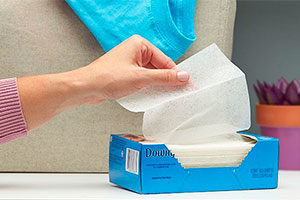
How to Use Fabric Softener Sheets
- Place fresh, unused dryer sheets in drawers, cabinets, and storage containers
- Stuff sheets into cracks and crevices where mice might enter
- Replace sheets every two weeks or when the scent begins to fade
- For enhanced effectiveness, add a few drops of peppermint oil to the sheets
For maximum effectiveness with natural repellents, use them in combination and replace them regularly to maintain strong scent barriers. Natural repellents work best as preventative measures or for minor infestations rather than for severe mouse problems.
Using Steel Wool as a Physical Barrier

While not technically a repellent, steel wool serves as an excellent physical barrier that works well in combination with other mouse deterrents. Mice cannot chew through steel wool, making it perfect for sealing entry points.
How to Use Steel Wool Effectively
- Identify all potential entry points – look for gaps around pipes, vents, door frames, and foundation cracks
- Cut steel wool to size using heavy-duty scissors or wire cutters (always wear gloves)
- Pack the steel wool tightly into gaps and openings
- For a more permanent solution, apply caulk over the steel wool to seal it in place
- Regularly inspect and replace any dislodged or degraded steel wool
Always wear heavy-duty gloves when handling steel wool to prevent cuts and irritation. Keep steel wool away from children and pets, as it can cause injury if swallowed or stepped on.
Creating a Comprehensive Mouse Prevention Strategy
The most effective approach to keeping mice away combines multiple repellent methods with proper home maintenance and sanitation. This layered strategy addresses all aspects of mouse prevention for long-term success. In addition to sealing entry points and maintaining a clean environment, using natural repellents can enhance your mouse prevention efforts. Understanding how to eliminate mice effectively requires a comprehensive plan that includes regular inspections and immediate action at the first sign of a problem. By integrating these methods, you can create an environment that is uninviting to mice and conducive to your peace of mind. It’s also important to regularly check for entry points and seal any gaps or cracks in your home’s exterior. When considering how to eliminate field mice, employing traps and natural deterrents can further enhance your efforts. Additionally, maintaining a clutter-free environment both indoors and outdoors will significantly reduce the chances of attracting these pests.
Step 1: Seal Entry Points
- Conduct a thorough inspection of your home’s exterior and interior
- Seal cracks and holes in foundations, walls, and around pipes with steel wool and caulk
- Install door sweeps on exterior doors
- Repair damaged window screens and vents
- Pay special attention to utility line entrances, which are common entry points
Step 2: Eliminate Food Sources
- Store food in airtight containers, especially grains, seeds, and pet food
- Clean up crumbs and spills immediately
- Keep garbage in sealed containers
- Feed pets at scheduled times and remove uneaten food
- Feed pets at scheduled times and remove uneaten food promptly
- Harvest fruits and vegetables from gardens promptly
Step 3: Deploy Strategic Repellents
- Place ultrasonic repellers in main living areas, ensuring sound isn’t blocked by furniture
- Apply scent repellents along baseboards and near entry points
- Use sachets or cotton balls with essential oils in enclosed spaces like cabinets and drawers
- Consider planting mint or other repellent plants near exterior entry points
Step 4: Maintain Cleanliness
- Vacuum and sweep regularly to remove crumbs and food debris
- Reduce clutter that might provide nesting materials or hiding spots
- Clean under appliances and furniture where food particles accumulate
- Wipe down counters with peppermint-infused cleaner
Step 5: Monitor and Maintain
- Check repellents regularly and replace as needed
- Inspect entry points periodically for new openings
- Look for signs of mouse activity (droppings, gnaw marks, nesting materials)
- Adjust your strategy based on observed results
For RV and vehicle protection, apply specialized treatments like Mouse Free Undercarriage Lubricant to prevent mice from nesting in engines and undercarriages. Regularly check under hoods and in storage compartments, as mice commonly infest vehicles left unused for extended periods.
FAQs About Mouse Repellents
Do ultrasonic mouse repellents really work?
Yes, ultrasonic mouse repellents can be effective, but their success depends on proper placement and environmental factors. These devices emit high-frequency sound waves that mice find distressing but are inaudible to humans.
For best results, ensure there are no objects blocking the sound waves, use multiple units for larger spaces, and understand that sound cannot penetrate walls. Effectiveness may decrease over time as some mice might become accustomed to the sound, so combining ultrasonic repellers with other prevention methods is recommended.
How long does peppermint oil keep mice away?
Peppermint oil typically keeps mice away for 3-5 days before needing reapplication. The effectiveness depends on the concentration of the oil and environmental factors like air circulation and humidity.
For maximum effectiveness, use 100% pure peppermint oil, apply it generously to cotton balls or in a spray solution, and replace it as soon as the scent begins to fade. Regular reapplication is crucial for maintaining a consistent deterrent effect.
What scent will keep mice away permanently?
No single scent will keep mice away permanently without reapplication. The most effective scents include peppermint oil, ammonia, cayenne pepper, and cloves, but all require regular refreshing to maintain their deterrent properties.
For long-term mouse prevention, combine scent repellents with proper sanitation, food storage practices, and physical exclusion methods like sealing entry points with steel wool. A comprehensive approach that addresses all aspects of mouse control will yield the best results.
Will vinegar repel mice?
Vinegar may have some repellent effect on mice due to its strong smell, but it’s generally less effective than other natural repellents like peppermint oil or ammonia. The acetic acid in vinegar creates an unpleasant environment for mice, but the effect is typically short-lived.
If using vinegar as a repellent, white vinegar or apple cider vinegar can be applied directly or mixed with water in a spray bottle and applied to areas where mice are active. For better results, consider combining vinegar with other more potent repellents.
Does Irish Spring soap repel mice?
Irish Spring soap may help repel mice due to its strong scent. Some homeowners report success using this method, though scientific evidence is limited. The soap contains strong-smelling compounds that mice find unpleasant.
To use Irish Spring soap as a repellent, cut bars into 1-inch cubes, wrap them in cheesecloth or place them in mesh bags, and position them in areas with mouse activity. Replace every few weeks as the scent fades. While this method might help as part of a broader strategy, it shouldn’t be relied upon as the sole solution for serious infestations.
Are mice repellents safe around children and pets?
Safety varies by repellent type. Ultrasonic repellers are generally safe around children and non-rodent pets but may affect pet rodents like hamsters and guinea pigs. Many natural repellents like peppermint oil are considered safe when used as directed, though essential oils should be kept out of reach of children and pets.
Chemical repellents require more caution and should be used according to manufacturer instructions. Always store repellents properly, keep them away from food preparation areas, and supervise children and pets around newly treated areas until dry or fully dispersed.
When to Call a Professional
While repellents are effective for prevention and minor infestations, some situations call for professional intervention. Consider contacting a pest control specialist if:
- You’ve tried multiple repellent methods without success
- There are signs of a large infestation (numerous droppings, multiple sightings)
- Mice have caused structural damage to your home
- You’re concerned about health risks associated with mouse infestations
- You can hear mice inside walls or inaccessible areas
- You have children or immunocompromised family members who might be at greater risk from mouse-borne diseases
Professional exterminators can provide a comprehensive assessment of your mouse problem and implement a targeted treatment plan that may include exclusion work, trapping, and specialized repellents not available to consumers. Most offer ongoing prevention services to keep your home rodent-free.
Conclusion
Keeping mice away from your home doesn’t have to be complicated or expensive. By understanding what repels mice and implementing a strategic combination of ultrasonic devices, scent-based repellents, and physical barriers, you can create an environment that mice will avoid.
Remember that consistency is key when it comes to mouse repellents. Regular maintenance and reapplication of scent-based products will ensure continuous protection. Combine your repellent strategy with good housekeeping practices and entry point sealing for the most comprehensive approach to mouse prevention.
Whether you choose electronic repellers like the Victor PestChaser Pro, natural solutions like peppermint oil, or physical barriers like steel wool, the best approach is typically a layered one that addresses multiple aspects of mouse behavior and biology. With persistence and the right tools, you can keep your home mouse-free for the long term.
